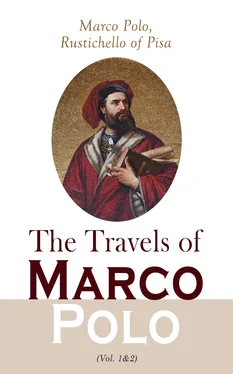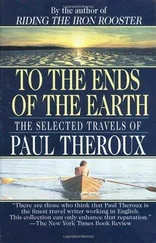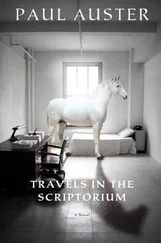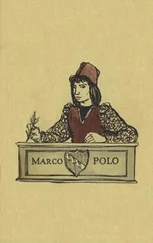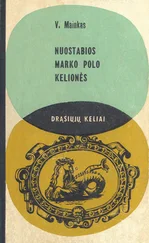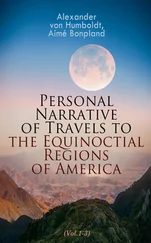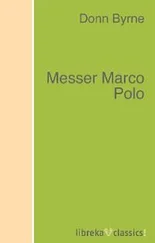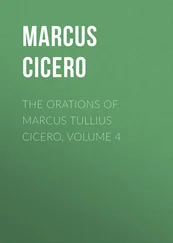V. ISPAHAN? The name is in Ramusio Spaan , showing at least that he or some one before him had made this identification. The unusual combination ff , i.e. sf, in manuscript would be so like the frequent one ft , i.e. st, that the change from Isfan to Istan would be easy. But why Istan_it_?
VI. SHÍRÁZ [( Shir = milk, or Shir = lion)—H. C.] representing the province of Fars or Persia Proper, of which it has been for ages the chief city. [It was founded after the Arab conquest in 694 A.D., by Mohammed, son of Yusuf Kekfi. (Curzon, Persia , II. pp. 93–110.)—H. C.] The last Dynasty that had reigned in Fars was that of the Salghur Atabegs, founded about the middle of the 12th century. Under Abubakr (1226–1260) this kingdom attained considerable power, embracing Fars, Kermán, the islands of the Gulf and its Arabian shores; and Shíráz then flourished in arts and literature; Abubakr was the patron of Saadi. From about 1262, though a Salghurian princess, married to a son of Hulaku, had the nominal title of Atabeg, the province of Fars was under Mongol administration. ( Ilch. passim .)
VII. SHAWÁNKÁRA or Shabánkára. The G. T. has Soucara , but the Crusca gives the true reading Soncara . It is the country of the Shawánkárs, a people coupled with the Shúls and Lúrs in mediaeval Persian history, and like them of Kurd affinities. Their princes, of a family Faslúyah, are spoken of as influential before the Mahomedan conquest, but the name of the people comes prominently forward only during the Mongol era of Persian history. [Shabánkára was taken in 1056 from the Buyid Dynasty, who ruled from the 10th century over a great part of Persia, by Fazl ibn Hassan (Fazluïeh-Hasunïeh). Under the last sovereign, Ardeshir, Shabánkára was taken in 1355 by the Modhafferians, who reigned in Irak, Fars, and Kermán, one of the Dynasties established at the expense of the Mongol Ilkhans after the death of Abu Saïd (1335), and were themselves subjugated by Timur in 1392.—H. C.] Their country lay to the south of the great salt lake east of Shíráz, and included Niriz and Darábjird, Fassa, Forg, and Tárum. Their capital was I/g or I/j, called also Irej, about 20 miles north-west of Daráb, with a great mountain fortress; it was taken by Hulaku in 1259. The son of the prince was continued in nominal authority, with Mongol administrators. In consequence of a rebellion in 1311 the Dynasty seems to have been extinguished. A descendant attempted to revive their authority about the middle of the same century. The latest historical mention of the name that I have found is in Abdurrazzák's History of Shah Rukh , under the year H. 807 (1404). (See Jour. As. 3d. s. vol. ii. 355.) But a note by Colonel Pelly informs me that the name Shabánkára is still applied (1) to the district round the towns of Runiz and Gauristan near Bandar Abbas; (2) to a village near Maiman, in the old country of the tribe; (3) to a tribe and district of Dashtistan, 38 farsakhs west of Shíráz.
With reference to the form in the text, Soncara , I may notice that in two passages of the Masálak-ul-Absár , translated by Quatremère, the name occurs as Shankárah . ( Q. R. pp. 380, 440 seqq.; N. et E. XIII.; Ilch. I. 71 and passim; Ouseley's Travels , II. 158 seqq.)
VIII. TÚN-O-KÂIN, the eastern Kuhistán or Hill country of Persia, of which Tún and Káin are chief cities. The practice of indicating a locality by combining two names in this way is common in the East. Elsewhere in this book we find Ariora-Keshemur and Kes-macoran (Kij-Makrán). Upper Sind is often called in India by the Sepoys Rori-Bakkar , from two adjoining places on the Indus; whilst in former days, Lower Sind was often called Diul-Sind. Karra-Mánikpúr, Uch-Multán, Kunduz-Baghlán are other examples.
The exact expression Tún-o-Káin for the province here in question is used by Baber, and evidently also by some of Hammer's authorities. ( Baber , pp. 201, 204; see Ilch. II. 190; I. 95, 104, and Hist. de l'Ordre des Assassins , p. 245.)
[We learn from (Sir) C. Macgregor's (1875) Journey through Khorasan (I. p. 127) that the same territory including Gháín or Kaïn is now called by the analogous name of Tabas-o-Tún. Tún and Kaïn (Gháín) are both described in their modern state, by Macgregor. (Ibid. pp. 147 and 161.)—H. C.]
Note that the identification of Suolstan is due to Quatremère (see N. et E. XIII. i. circa p. 332); that of Soncara to Defréméry ( J. As. sér. IV. tom. xi. p. 441); and that of Tunocain to Malte-Brun. ( N. Ann. des V. xviii. p. 261.) I may add that the Lúrs , the Shúls , and the Shabánkáras are the subjects of three successive sections in the Masálak-al-Absár of Shihábuddin Dimishki , a work which reflects much of Polo's geography. (See N. et E. XIII. i. 330–333; Curzon, Persia , II. pp. 248 and 251.)
NOTE 2.—The horses exported to India, of which we shall hear more hereafter, were probably the same class of "Gulf Arabs" that are now carried thither. But the Turkman horses of Persia are also very valuable, especially for endurance. Kinneir speaks of one accomplishing 900 miles in eleven days, and Ferrier states a still more extraordinary feat from his own knowledge. In that case one of those horses went from Tehran to Tabriz, returned, and went again to Tabriz, within twelve days, including two days' rest. The total distance is about 1100 miles.
The livre tournois at this period was equivalent to a little over 18 francs of modern French silver. But in bringing the value to our modern gold standard we must add one-third, as the ratio of silver to gold was then 1:12 instead of 1:16. Hence the equivalent in gold of the livre tournois is very little less than 1_l._ sterling, and the price of the horse would be about 193_l._[1]
Mr. Wright quotes an ordinance of Philip III. of France (1270–1285) fixing the maximum price that might be given for a palfrey at 60 livres tournois , and for a squire's roncin at 20 livres. Joinville, however, speaks of a couple of horses presented to St. Lewis in 1254 by the Abbot of Cluny, which he says would at the time of his writing (1309) have been worth 500 livres (the pair, it would seem). Hence it may be concluded in a general way that the ordinary price of imported horses in India approached that of the highest class of horses in Europe. ( Hist. of Dom. Manners , p. 317; Joinville , p. 205.)
About 1850 a very fair Arab could be purchased in Bombay for 60_l._, or even less; but prices are much higher now.
With regard to the donkeys, according to Tavernier, the fine ones used by merchants in Persia were imported from Arabia. The mark of silver was equivalent to about 44_s._ of our silver money, and allowing as before for the lower relative value of gold, 30 marks would be equivalent to 88_l._ sterling.
Kisi or Kish we have already heard of. Curmosa is Hormuz, of which we shall hear more. With a Pisan, as Rusticiano was, the sound of c is purely and strongly aspirate. Giovanni d'Empoli, in the beginning of the 16th century, another Tuscan, also calls it Cormus . (See Archiv. Stor. Ital. Append. III. 81.)
NOTE 3.—The character of the nomad and semi-nomad tribes of Persia in those days—Kurds, Lúrs, Shúls, Karaunahs, etc.—probably deserved all that Polo says, and it is not changed now. Take as an example Rawlinson's account of the Bakhtyáris of Luristán: "I believe them to be individually brave, but of a cruel and savage character; they pursue their blood feuds with the most inveterate and exterminating spirit. … It is proverbial in Persia that the Bakhtiyaris have been compelled to forego altogether the reading of the Fatihah or prayer for the dead, for otherwise they would have no other occupation. They are also most dextrous and notorious thieves." ( J. R. G. S. IX. 105.)
Читать дальше
